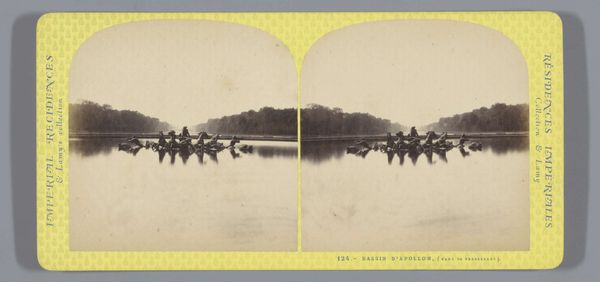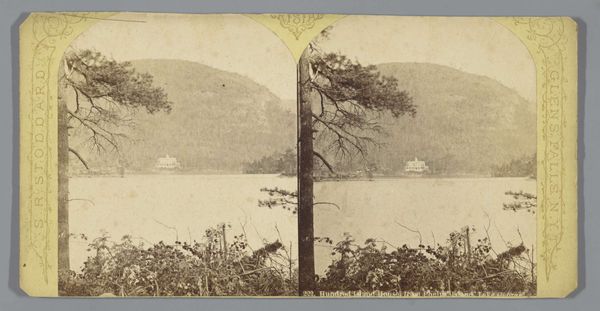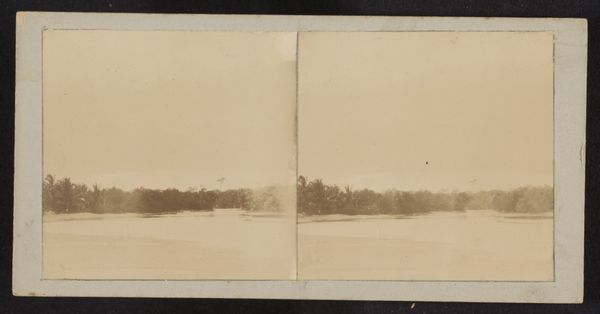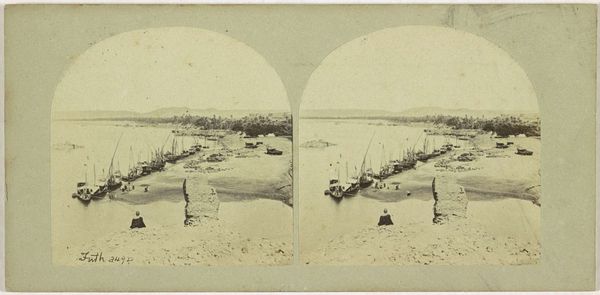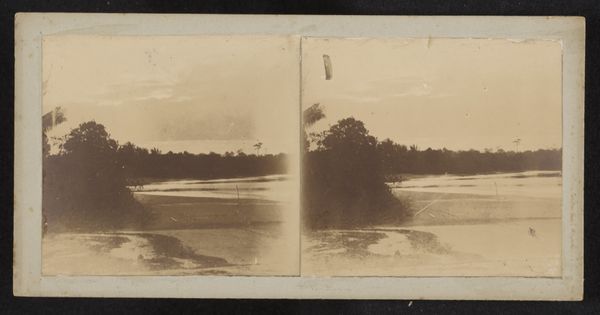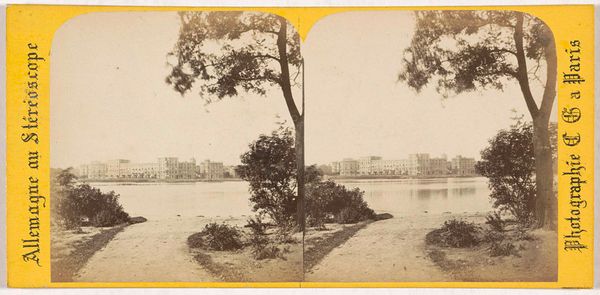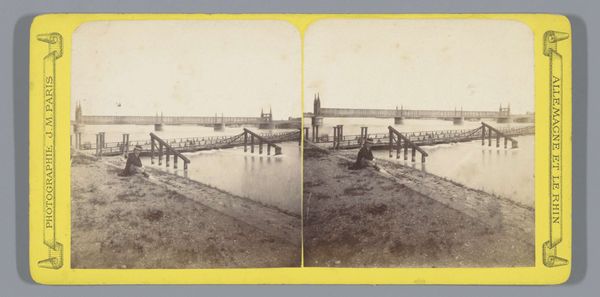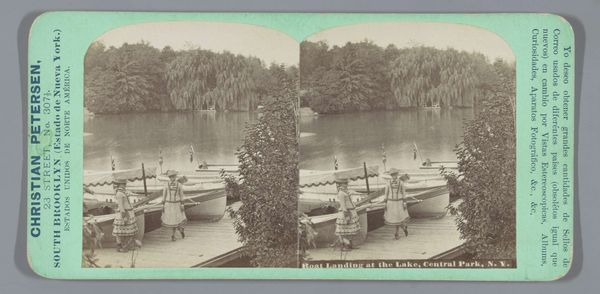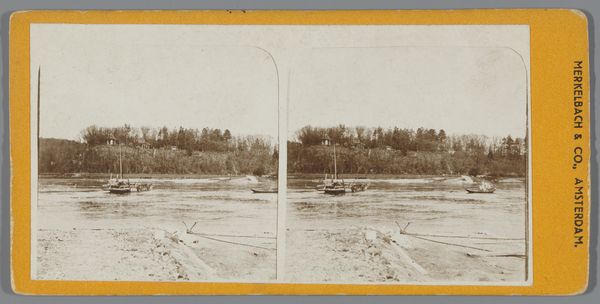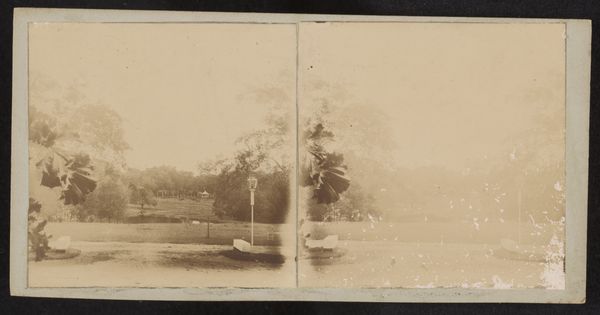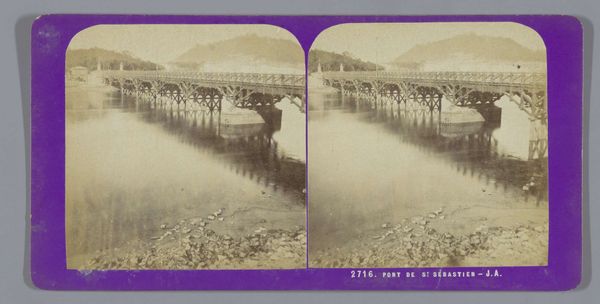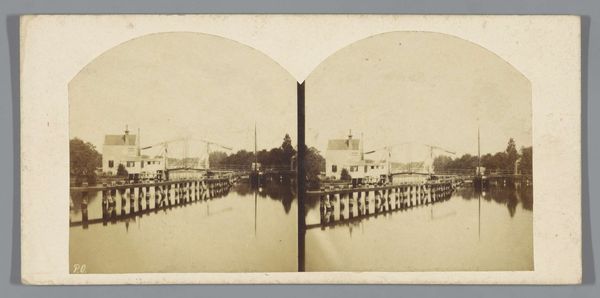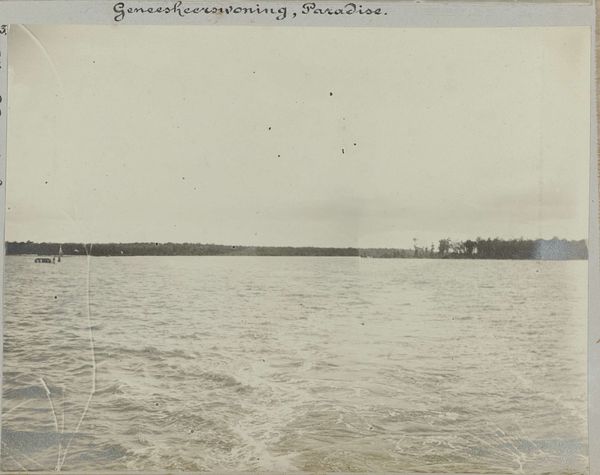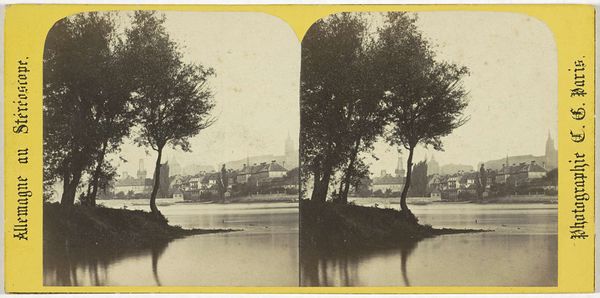
Drie mannen op Sheldon Point kijken uit over Lake George, gezien vanaf Trout Pavillion 1870 - 1890
0:00
0:00
photography, gelatin-silver-print
#
landscape
#
photography
#
gelatin-silver-print
#
realism
Dimensions: height 91 mm, width 176 mm
Copyright: Rijks Museum: Open Domain
Curator: Let's turn our attention to "Three Men on Sheldon Point Overlooking Lake George, Seen from Trout Pavilion," a gelatin-silver print created by Seneca Ray Stoddard between 1870 and 1890. Editor: There's a stillness to this piece. A quiet, contemplative mood washes over me just from the balanced composition, the symmetry created by the reflection in the water. Curator: I find it fascinating to consider Stoddard's process. Producing photographs at this time meant wrestling with the chemical baths, mastering exposure times and the portable darkroom required in landscape photography. Think of the physical labor behind creating a seemingly effortless scene. Editor: True, and the tonal range is limited yet masterfully utilized. Notice how Stoddard employs subtle variations in greyscale to create depth. The figures, positioned at the edge, lead your eye into the expanse of the water and toward the distant shore. Curator: I’m more interested in what it meant to picture leisure during the gilded age. Lake George became this manufactured escape, but the reality involved railroad access, boat transport, even the very pavilion the scene is photographed from—all industries reshaping the landscape, turning nature into commodity. Editor: I understand, yet the appeal remains in the delicate play of light and shadow, the hazy atmosphere—all contributing to a tranquil, almost dreamlike effect. There's an intentional simplification. The forms are reduced, almost abstract. Curator: Perhaps. But who are these figures? Likely tourists or members of the burgeoning middle class seeking respite. This image reflects a manufactured idyll. And gelatin-silver prints were easily reproduced, so mass dissemination contributed to this romantic idea of landscape and leisure. Editor: Still, regardless of social motivations, the photograph is a testament to compositional and tonal subtleties that transcend mere documentation. I am moved by its delicate visual structure. Curator: So, through examining both form and the conditions of its creation, we can understand the complexities of photographic meaning. Editor: A stimulating dichotomy between the aesthetic and the historical.
Comments
No comments
Be the first to comment and join the conversation on the ultimate creative platform.
